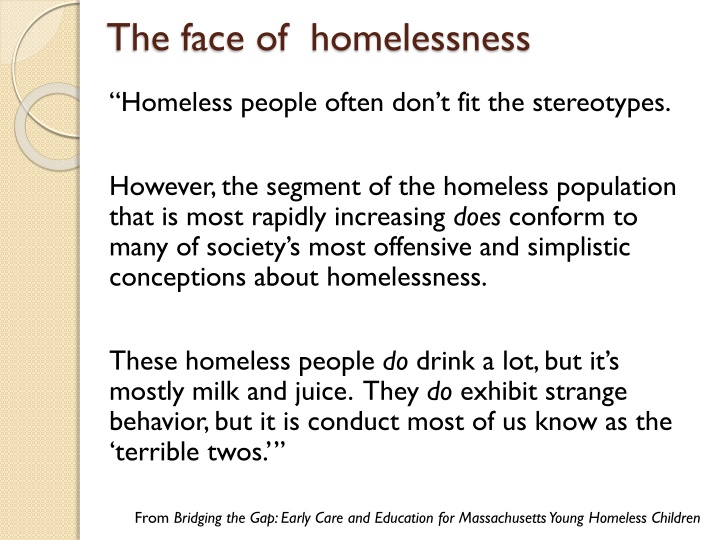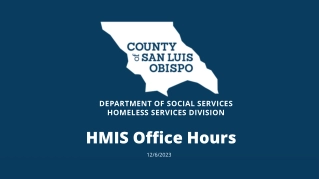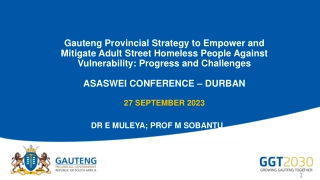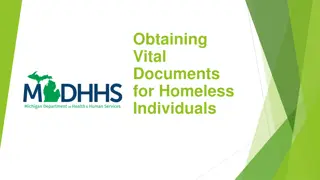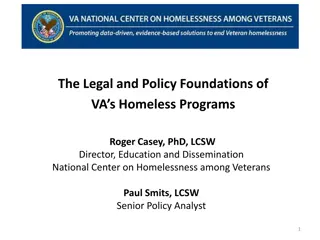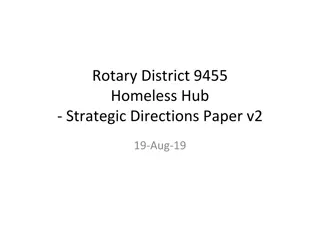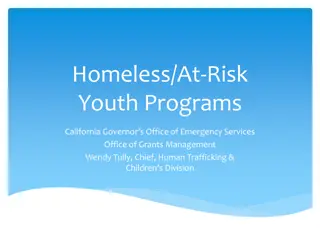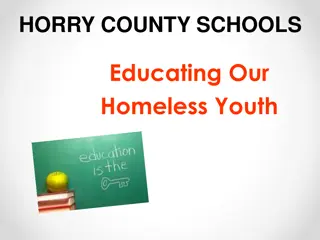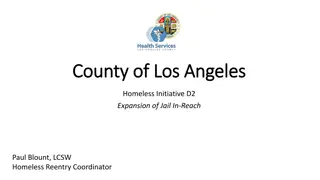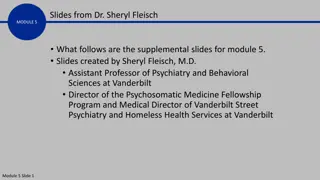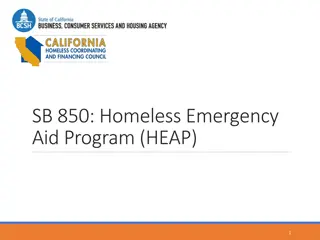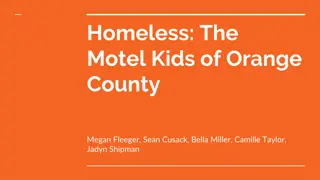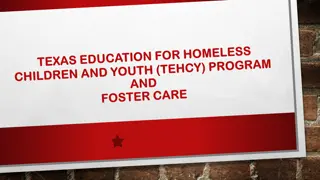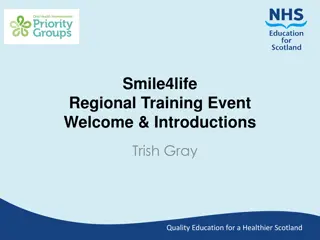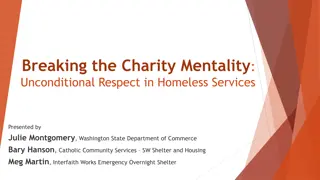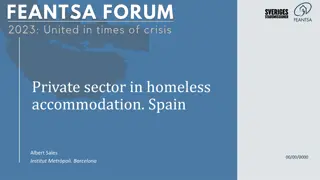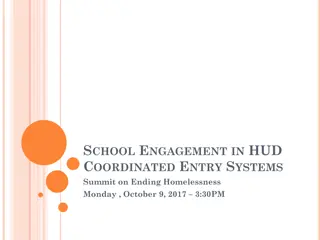Supporting Homeless Children in Schools
Homelessness among children presents unique challenges in schools. Learn about the characteristics of homeless populations, the impact on education, and ways schools can provide essential support to stabilize basic needs and build relationships for these vulnerable students.
Download Presentation

Please find below an Image/Link to download the presentation.
The content on the website is provided AS IS for your information and personal use only. It may not be sold, licensed, or shared on other websites without obtaining consent from the author.If you encounter any issues during the download, it is possible that the publisher has removed the file from their server.
You are allowed to download the files provided on this website for personal or commercial use, subject to the condition that they are used lawfully. All files are the property of their respective owners.
The content on the website is provided AS IS for your information and personal use only. It may not be sold, licensed, or shared on other websites without obtaining consent from the author.
E N D
Presentation Transcript
The face of homelessness Homeless people often don t fit the stereotypes. However, the segment of the homeless population that is most rapidly increasing does conform to many of society s most offensive and simplistic conceptions about homelessness. These homeless people do drink a lot, but it s mostly milk and juice. They do exhibit strange behavior, but it is conduct most of us know as the terrible twos. From Bridging the Gap: Early Care and Education for Massachusetts Young Homeless Children
True or False? Approximately 25% of homeless children living in shelters are under the age of 5 Approximately 45% of homeless preschoolers have at least one major developmental delay The fastest growing segment of the homeless population is single adult women Building relationships is the best practice a school can develop when supporting students who are experiencing homelessness
True or False? Before enrolling and placing a student who is homeless in classes, it is best to gather all the records you can to ensure correct classroom placement, thus having them start school once you have all the information. Many public school districts have someone in charge of school services for students experiencing homelessness All unaccompanied youth are considered homeless When supporting the needs of a student experiencing homelessness, schools must eliminate any educational barrier that exists or arises McKinney Vento is a state law that gives rights to students experiencing homelessness in schools
Why is McKinney Vento important? Research on School Mobility Students who switch schools suffer: Psychologically Socially Academically More likely to repeat grades, will have lower math/reading scores Mobility hurts non-mobile students as well You will hear: On average, 4-6 months to recover academic progress each time a student changes schools. Expert panel report submitted in B.H. v. McDonald by Dr. Joy Rogers, Loyola University, 1991. 4
How Schools Can Help Children Who Are Experiencing Homelessness Stabilize the Child s Basic Needs Physical Needs Emotional Needs Social Needs
How Schools Can Help Children Who Are Experiencing Homelessness Stabilize the Child s Basic Needs Physical Needs Emotional Needs Social Needs Build Relationships School wide Classroom Recess Family Provide check-in s Two days Two weeks One month
That said, here are things to think about : No prenatal care/low birth weight means a 9 fold increase in chance of death in first year or developmental delays 75% under 5 have one developmental delay, 44% have 2 or more delays Physical health is compromised Environment is compromised Stress and Trauma, may be acute or chronic and can change brain chemistry: PTSD Food Insecurity Mental Health including attachment may be affected Exposure to Violence Educational delays or missing pieces Juvenile Delinquency Attendance and Tardiness Fatigue Anxiety about safety (their own and their family)
Maslows School Hierarchy of Needs Where and how do schools, classrooms, programs, tutoring, fit in? What do our students need? What do/can schools/programs do to help meet these needs? How do we help students feel: Welcome, Wanted and Safe, in our schools?
Small Group Activity Move into groups of 3-4 Remember each students needs to feel Welcome, Wanted, and Safe In each group take time to brainstorm on chart paper ways to help new students feel Welcome, Wanted and Safe in your schools and classrooms. What activities/procedures can help them integrate and understand the routines, expectations, and community Be ready to share your ideas in the larger group
Lets talk about the MOBILITY SHUFFLE
Processing the Mobility Shuffle How did this make you feel? Did it affect your learning? Did you leave anything behind? Why or why not? What did you notice? Did you find yourself anticipating anything? How did you cope? What did you notice about the reforming of groups? What new thoughts do you have about mobile students? What can we do to support mobile students and families?
